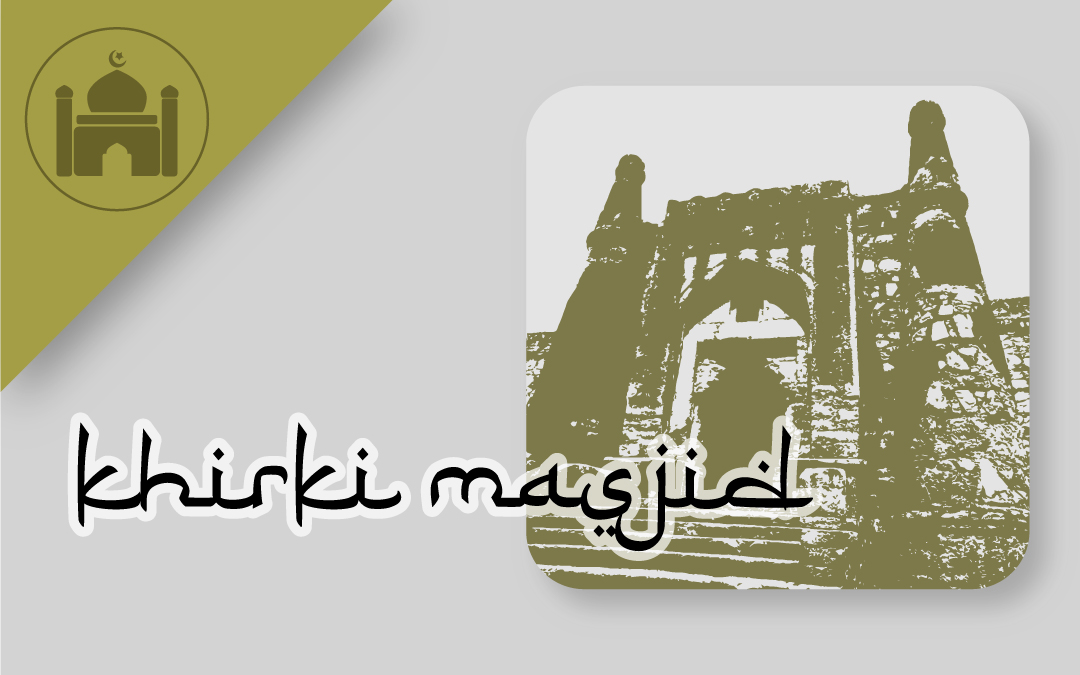Narrative
Khirki masjid, as the name suggests, has arched windows with latticed stone on its exterior wall. It was constructed by the Vazir of Sultan Feroz Shah Tughlaq in the latter part of Feroz Shah’s reign and is located on the south-eastern part of Jahanpannah. It is an example of cross-axial mosque. The structure of the masjid is unique for it is never employed again in the construction of mosques in Delhi.
The Delhi Sultanate was invaded by Timur in 1398 when the Tughlaqs were in power. However, the tughlaqs had become weak by this time. The battle was fought between Sultan Nasir-ud-din Tughlaq, the last Tughlaq ruler and Timur on 17th December, 1398. The latter emerged victorious, looted and plundered Delhi while the Sultan fled to safety. Thereafter, Khizr Khan who was the governor of Multan was installed as the Sultan of Delhi. Thus, beginning with Khizr Khan, the Sayyids were established as the fourth dynasty that ruled the Delhi Sultannate.
Architecture
Khirki masjid, as the name suggests, has arched windows with latticed stone on its exterior wall. It was constructed by the Vazir of Sultan Feroz Shah Tughlaq and is located on the south-eastern part of Jahanpannah. It is an example of cross-axial mosque. The structure of the masjid is unique for it is never employed again in the construction of mosques in Delhi. It has a square plan, approximately 52 metres on each side, with tapering circular bastions on its each corner. It stands on a 3 metre raised platform with chambers below. For the purpose of entry, there are domed gateways with worn-out turrets on the north, south and east. The north and the south gateways have minars which are circular in plan and three-storeyed while those on the eastern gateways are four storeyed with the second storey having a stellate flanging similar to the one on the third storey of Qutub Minar. As in other congregational mosques which
had an open courtyard, the khirki masjid has two arcades; cross axial, three bays wide and fifteen bays long; running from north-south and east-west direction and dividing the courtyard into four smaller ones. These four quadrants measure almost 9 metres on each side and are
open to sky. The arcades are covered with low domes and flat roofs for protection from the unbearable heat in Delhi. In totality, if the masjid is viewed from the top, it consists of 25 equal units with 4 units being open to sky. It has a beautiful symmetrical design that is praiseworthy. The masjid is made in rubble with minimal ornamentation, only simple patterns on thick stucco.
References
a. Sharma, Jyoti. P, “A Cross- Cultural Dialogue: A Case Study of Pre-Mughal Mosques in Delhi”, 2002.
b. Welch, Anthony and Crane, Howard. “The Tughlaqs: Master Builders of the Delhi Sultanate”.1983.
c. https://en.wikipedia.org/wiki/Timurid_conquests_and_invasions.

